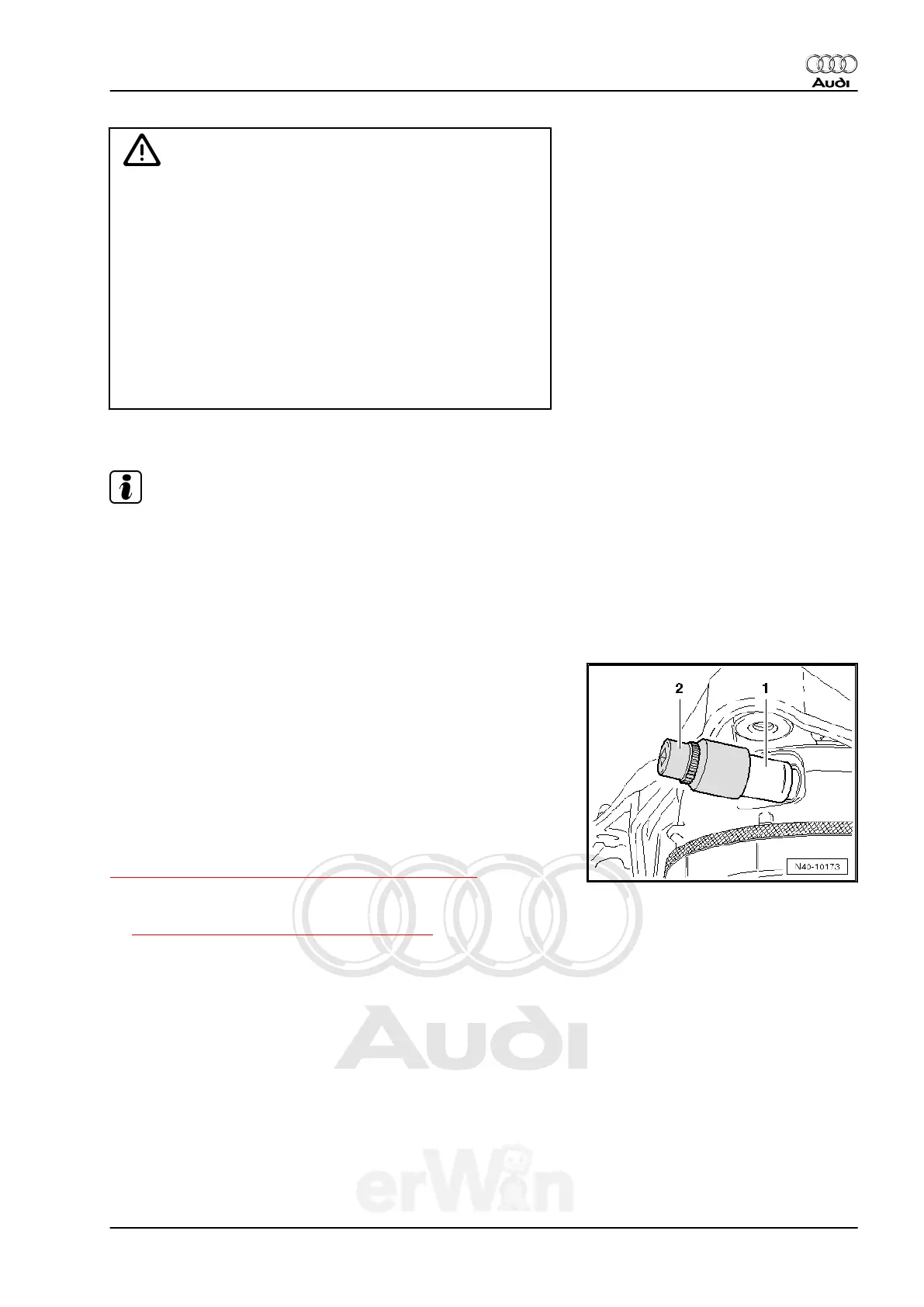Protected by copyright. Copying for private or commercial purposes, in part or in whole, is not
permitted unless authorised by AUDI AG. AUDI AG does not guarantee or accept any liability
with respect to the correctness of information in this document. Copyright by AUDI AG.
WARNING
♦ If residual pressure retaining valve sticks, the vehicle must
be on a hoist and the wheels must rotate freely in order to
replace the valve.
♦ When removing air line, there is the possibility that the re‐
sidual pressure retaining valve will also be removed.
♦ If vehicle is not raised with a hoist, vehicle sinks immedi‐
ately on side where residual pressure retaining valve was
removed. There is a strong risk of injury because the arms
are clamped.
♦ Vehicle must remain on hoist until a new residual pressure
retaining valve is installed and suspension strut (air sus‐
pension) is refilled.
Removing
Note
This procedure applies to replacement of residual pressure re‐
taining valve with suspension strut (air suspension) installed.
– Position the vehicle on the lifting platform and raise it until the
wheels rotate freely.
– Remove wheel housing liner, refer to ⇒ Rep. Gr. 66 .
– Remove residual pressure retaining valve from air line.
– Remove residual pressure retaining valve -1- from suspension
strut (air suspension) using Pressure Retention Socket -
T10158/1- -2-.
Installing
Installation is the reverse of removal, with special attention to the
following:
Vehicle must remain on hoist until a new residual pressure re‐
taining valve is installed and suspension strut (air suspension) is
refilled.
Tightening specifications, refer to
⇒ “4.6 Front Air Suspension Strut Overview”, page 70 .
– Fill suspension strut (air suspension) via -Vehicle Diagnostic
Tester- , refer to
⇒ “3.9 System, Venting or Filling”, page 221 .
Audi Q7 2007 ➤
Suspension, Wheels, Steering - Edition 01.2014
4. Air Suspension Strut, Upper Control Arm and Level Control System Sensor 77

